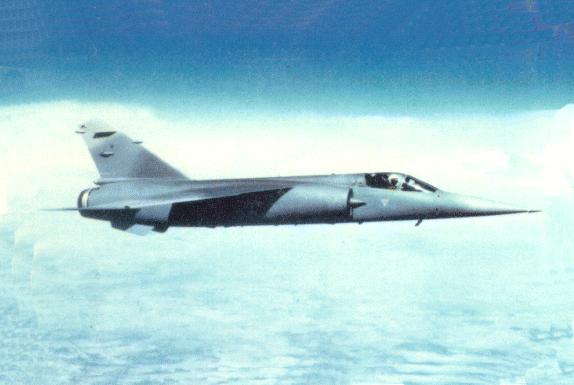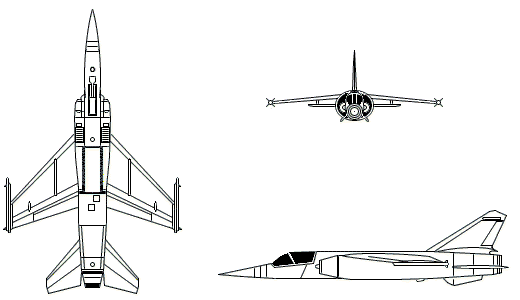Yep, its the Dassault-Breguet Mirage F-1.

Lets have a break from Russian bombers.

Within a year of the Mirage III entering service with the French air force, Dassault-Breguet was developing a successor. The Mirage F1 has 40 per cent more internal fuel than the Mirage III and a better wing design that improves maneuverability and enables it to take off from shorter runways. The Mirage F.1 replaced the familiar delta wing of the Mirage with a swept wing, set at shoulder height and fitted with flaps and slats. This was combined with a low-set slab tailplane.
Following on the Mirage F-2, which was a revival of the classic arrow-wing design with stabilizers, the Mirage F-1 is a defense and air superiority single-seater plane. This revival was made possible by technological advances which permit manufacture of ultra-thin but robust wings, enabling at supersonic speeds flight performance equivalent to that of delta wings. The integrity of the fuselage structure allows the aircraft to carry a maximum amount of fuel.
The wings are high-mounted, swept-back, and tapered. Missiles are usually mounted at the wing tips. There is one turbojet engine in the body. There are semicircular air intakes alongside the body forward of the wing roots. There is a single exhaust. The fuselage is long, slender, pointed nose and a blunt tail. There are two small belly fins under the tail section and a bubble canopy. The tail is swept-back and tapered fin with a blunt tip. The flats are mid-mounted on the fuselage, swept-back, and tapered with blunt tips.
The Mirage F-1 prototype made its maiden flight with René Bigand at the controls, 23rd December 1966, at Melun-Villaroche (the Seine-et-Marne region of France).
The French air force ordered the Mirage Fl for its interceptor squadrons, and the first F1s entered service in 1973. The Fl proved a very popular export, with over 500 of them sold abroad in the first 10 years of production. More than 700 Mirage F-1's have been sold to some 11 countries. The F.1 did not achieve the enormous sales of the Mirage III, but was nevertheless sold to France, Ecuador, Greece, Iraq, Libya, Marocco, Quatar, Jordania, South-Africa, and Spain. The Dassault Mirage F-1C was the standard French fighter before Mirage 2000 entered service in the air force in 1984. The Mirage Fl has seen combat in the Persian Gulf, where Iraqi Mirage F1s played an important role in the attacks on tankers during the late 1980s. There are several versions now operational - all-weather interceptors, fighter-bombers and dedicated reconnaissance aircraft. A more advanced version, the F.1E with a M53 engine, lost the NATO fighter competition to the F-16. The Mirage 2000 has replaced the F1 on the production lines, but the Mirage F1 will continue in service for some time.
http://www.globalsecurity.org/military/world/europe/mirage-f1.htm
 Lets have a break from Russian bombers.
Lets have a break from Russian bombers.




